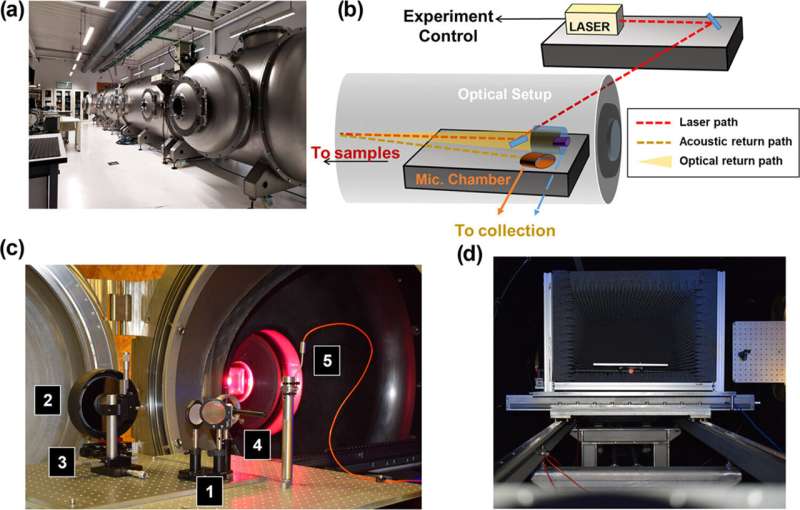New method to analyze minerals under terrestrial and Martian atmospheric conditions

A research team from the University of Málaga has validated the use of a system for more accurate detection of compounds in rocks by fusing different types of data obtained with the same laser technology that provides immediate information from small samples. The research has been carried out in the laboratory simulating the atmospheric conditions of Earth and Mars.
The technology used to improve the definition of the atomic composition of rocks, known as laser-induced breakdown spectroscopy (LIBS), consists of the emission of a light beam that transforms the state of matter from solid to plasma. In just one millionth of a second, the system captures the emission of the elements that make up the sample.
At the same time as the change of matter occurs, an acoustic wave originates from the detonation of the mineral. The experts involved in this study have fused spectral information and that provided by the propagation of sound to obtain more reliable data. In the article "LIBS-Acoustic Mid-Level Fusion Scheme for Mineral Differentiation under Terrestrial and Martian Atmospheric Conditions" published in the journal Analytical Chemistry, these experts confirm that this model for the analysis of materials achieves a better definition of the compounds in less time and at a scale of analysis approaching the attogram, i.e. an amount of mass equivalent to that of a virus.
In comparison with the results obtained with LIBS or the acoustic dataset separately, the results provided by the new system improves the information from 90% and 77% respectively to 92% for Earth atmospheric conditions, and from 85% and 81% to 89% for Mars.
In other words, the new system manages to improve the results of the analysis by including the acoustic data of the laser intervention from a very small sample and in real time. "We demonstrate for the first time that the acoustic wave generated by the laser on the sample can be used to create a statistical descriptor and to improve the capacity of LIBS for rock differentiation," Javier Laserna, a researcher at the University of Málaga and one of the authors of the article, tells Fundación Descubre.
Fusion cuisine with LIBS
LIBS is widely used by the scientific community to determine the composition of rocks, minerals and soils under different conditions because of its high performance, immediacy and reliability. However, experts have gone a step further by simultaneously assessing the acoustic response input provided by laser-induced plasmas. In this way, they are able to identify geological samples much more accurately.
Specifically, the researchers selected two groups of minerals, six rich in iron and six rich in calcium. The initial hypothesis was that the elemental composition should generate very similar LIBS spectra within each group. These elements are abundant in the solar system and have been detected both in meteorites of Martian origin and in materials analyzed on the planet itself.
Calcium in particular is one of the main components in rock formation, and its presence and arrangement provides relevant information for studying the origin of the planets Mercury, Venus, Earth and Mars.
The process for obtaining the LIBS data and the acoustic responses is achieved from the same test, which consists in applying a laser to the sample. However, the information they yield is completely different. In LIBS, the signal comes mainly from atoms that have undergone a process of fragmentation, atomization, ionization and excitation. In other words, the matter is transformed into plasma and the atoms are made available for analysis. In the case of acoustic information, the wave is generated by the expansion of the plasma in the atmosphere. Therefore, the combination of the two provides complementary information to extract new data that more clearly identifies the different elements and their arrangement.
This model could be of great interest for the analysis of materials in complex environments, for example, those carried out in other atmospheres, such as explorations of Mars or at great ocean depths. The experts are continuing their studies to improve the implementation of this technique in open environments, since the presence of echoes or interference can alter the acoustic signal and modify the values. They also plan to improve the data obtained in the atmosphere of Mars by using more sensitive microphones.
More information: César Alvarez-Llamas et al, LIBS-Acoustic Mid-Level Fusion Scheme for Mineral Differentiation under Terrestrial and Martian Atmospheric Conditions, Analytical Chemistry (2022). DOI: 10.1021/acs.analchem.1c04792
Journal information: Analytical Chemistry
Provided by Fundación Descubre




















